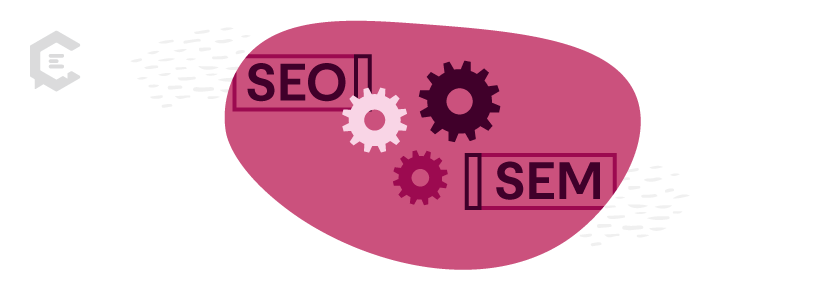Many marketers interchange “content optimization” with “SEO optimization.”
But that’s not exactly correct.
Content optimization is actually a larger umbrella that SEO optimization falls under. It goes beyond search rankings into every aspect of your content creation.
In this article, we’ll give you a comprehensive overview of content optimization. We’ll cover all of its areas, different techniques, and practical strategies to enhance your content across the board.

Unpacking Content Optimization
In a nutshell, content optimization is the process of improving your content creation, so it has the strongest possibility of achieving its goals. Those goals are normally around improving visibility, engagement, and conversions. In most cases, it’s a combination of them.
The importance of content optimization on your content marketing
You might have the best content in the world. If it’s tailored to the wrong audience or hard to find, it won’t matter. Content optimization focuses on two things:
- Optimizing for search engines
- Enhancing user experience (UX)
Both of those things ultimately complement and overlap one another. It’s about ensuring your content is highly visible and highly engaging. That means ensuring it’s well-organized, easy to navigate, and structured toward Google’s algorithm.
Let’s start with SEO.
Understanding SEO
SEO stands for “search engine optimization.” It’s the process of impacting a website’s visibility in a search engine’s organic (or natural) results. The higher the visibility, the higher the increase in visitors to the website. And therefore, the higher amount of people hopefully taking the desired action.
Katie Tweedy, a content strategy supervisor at Collective Measures, explains:
“Optimizing for search engines requires a knowledge of search engine algorithms and the ability to change the website. SEO includes a variety of tactics, from optimizing meta titles and descriptions to site speed analysis to auditing the search landscape to identify topic creation opportunities.”
There are many elements of SEO, including:
- On-page copy
- Keyword research
- Internal and external linking
- Bulleted lists and smart organization
- Meta descriptions, titles, and other backend optimization
Keyword Research and Implementation
At the heart of the SEO aspect of content optimization is keyword research. Choosing the right keywords can make or break your efforts. Start with these four tactics:
- Audience analysis: Understanding your audience’s needs is the first step to honing in on your keywords. What are their pain points, interests, and preferences?
- Competitor analysis: Identify your main competitors and the keywords they target. Are there any gaps or untapped niches you can leverage?
- Keyword tools: Tools like Semrush and Moz can help you identify the highest-value keywords you should target.
- Long-tail keywords: Don’t underestimate the power of long-tail keywords. They can capture highly targeted traffic and be valuable for niche topics.
Once you have your keywords locked down, it’s time to fold them into your content. Make sure to include them as much as you can (without overdoing it) in your:
- Title tags
- Headings
- Content body
- Meta descriptions
- Image Alt text
And if you’re optimizing for SEO, you also should know about SEM.
Understanding SEM
SEM stands for ‘search engine marketing’ and is typically considered the second step in an optimization strategy. SEO involves your go-to-market and specifically involves organic ranking, while SEM is paid.
SEO will teach you what keywords are more likely to convert so you can put money behind them to rank higher in search results, thus creating a more powerful business funnel.
As Katharine McKee, the founder of Morphology Consulting, explains,
“SEM revolves around paid ads and paid placements, so that you come up more often in search or at a higher rank in search for terms you don’t own,” McKee continues. “Now SEM is a long-held practice. It’s also part of what makes brands feel like they have to pay to play in the space. That is because they are doing one or the other and not both.”
There are many elements of SEM, including:
- Ad campaigns
- Ad text
- Landing pages, blog pages, and more
- Keyword filtration and optimization
How SEO & SEM Work Together
Generally speaking, SEO and SEM work best when done in tandem.
By combining the data from SEO and SEM campaigns, marketers can better understand their target consumer/customer behavior and illuminate what they care about at each stage of their journey. That will help guide you on how to craft content that engages those needs and wants.
“Co-optimization can help optimize paid media budgets while optimizing pages can improve paid search quality scores,” Tweedy says. “Strong co-optimized marketing efforts can result in greater overall share of voice, knocking out competitors, and can allow marketers to monitor search cannibalization more effectively.”
That’s a lot of bang for your effort, huh?
Content Optimization for User Experience
Alright, you’re optimized for SEO. And that’s great. But you can’t forget about the human side of optimization.
Why? Because the success of your content marketing doesn’t just depend on getting people to see it. It also depends on how well your content caters to your audience’s needs and expectations. Here’s how to achieve that:
- Satisfy User Intent: Google closely monitors user satisfaction with your webpage’s content. If users quickly return to the search engine results, it indicates to their algorithm that your content may not meet their needs. That can lead to lower rankings. Start by looking at what’s already ranking in the SERPs.
- Keep it simple: Your content should be easy to understand for all levels of readers. Avoid superfluous language and complicated jargon. Aim for a readability score of 7-8 on apps like Hemingway.
- Structure and styling: Most online readers skim through what they’re reading. Use headings and subheadings to organize your content. It will not only break up the text. It will create a visually logical flow. That will make your content easy to navigate for your audience.
- Break up your text: To take your structure and styling a step further, break up your walls of text. The smaller and more diverse the chunks, the more digestible it is. Use bullet points, quotes, infographics, images, and lists to make your content easy on the eyes.
- Keep it natural: Most of all, your content needs to connect with your audience. Quality doesn’t equal formal and dull. Writing as you speak establishes a conversational tone that draws your audience in and resonates.
Other content optimization techniques
Utilizing AI and machine learning
An article on content optimization wouldn’t be complete without a section on AI. AI can offer unparalleled insights and automation capabilities that streamline and scale your content optimization.
AI can help:
- Analyze user behavior: AI tools can track and analyze users’ behaviors at lightning speed. Then, they identify patterns that provide valuable insights into which areas of your content are resonating and which areas are not.
- Support keyword research: We already discussed keyword research being essential to SEO optimization. AI platforms like Keyword Insights can quickly process vast amounts of data and identify high-traffic keywords and clusters for your content.
- Enhance content personalization: All that data AI generates informs how you can tailor your content for a more personalized user experience. That personalization will drive more traffic and increase engagement.
- Improve content quality: AI can be your proofreading assistant. Tools like Grammarly analyze readability, grammar, and overall tone to ensure your content is well-written, informative, and eye-catching.
- Provide predictive analysis: Search engine algorithms are constantly evolving. By tracking user behavior, AI can identify future trends and patterns. That can give you insight into where the search engine algorithms are heading.
Ready to Optimize Your Content
We hope our comprehensive guide gives you a strong foundation for your content optimization efforts. But that’s just the beginning. And if you’d rather save time and resources by outsourcing to an expert, ClearVoice is here.
Our advanced workflows and managed content creation services can help you maximize every aspect of your content optimization. Talk to a specialist today to see what we can do.








